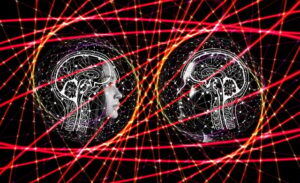Explore the Barriers of Quantum Physics: An Invisible Journey
Quantum physics is a subfield of physics that concentrates on those methods by which s\ it can predict behavior on the smallest scales – at atomic levels and levels measured in phenomena from subatomic entities. Challenging the classical understanding of the physical world, this within itself reveals what seems almost impossible to the daily experience: from the famous double-slit experiment to quantum entanglement, it opens up a realm in which strange and wonderful phenomena continue to craze and excite scientists.
Awakening the New born Quantum Theory
Quantum physics arose in the early 20th century at the time when scientists began to show the deviation of classical physics from experimental results. As far as a foundation is concerned, a very important step towards it was made in the year 1900 when Max Planck introduced the idea of quantization. In fact, he worked with black body radiation and concluded that energy is not emitted or absorbed in a smooth flow as previously thought but in discrete packets called quanta.
Development of quantum mechanics around the 1920s was spearheaded by such personalities as Niels Bohr, Werner Heisenberg as well as Erwin Schrödinger and then later tagged with different names, including the but new quantum mechanics, quantum physics and so on.
Wave-Particle Duality
The extremely fascinating idea in quantum physics is that of wave-particle duality: it is the hypothesis under which it is believed that particles may behave in both a wave-like and a particle-like manner. Thomas Young famously demonstrated this idea when he carried out his double-slit experiment in 1801, which was later extended to experiments with electrons. When electrons or photons hit a barrier with two slits, an interference pattern is created, which is considered to be typical of waves. However, when one observes something, they behave as if they are particles that go through one seminal way or another.
Heisenberg’s Uncertainty Principle
The uncertainty principle was formulated by Werner Heisenberg in 1927. It states that it is impossible to know, at one and the same time, the position of a particle and its momentum to an exactitude. The more accurately we measure one of these two properties, the less accurately we can know the other. This property is not a flaw in measuring devices but a fundamental property of nature at the quantum level.
According to the uncertainty principle, our classical perceptions of determinism have had any number of cracks in them. In classical mechanics, if we know the initial conditions of a system, we can predict its future with precision. However, according to quantum mechanics, if we have complete knowledge about a particular system, we can just predict probabilities and not certainties.
Quantum Entanglement: Spooky Action at a Distance
One of the spookiest phenomena of quantum mechanics is quantum entanglement, which is actually really interesting and shows all the “spooky action at a distance” that Albert Einstein wrote in the context of it. Whenever two or more particles are entangled, the states of their individual particles become so interlinked within the state of one another that all the states of any particle are completely connected with the states of the others, irrespective of the distance.

Quantum superposition, and in particular the famous paradox of Schrödinger’s cat, offers another marvelous feature of quantum mechanics. A particle exists in such a way that it can simultaneously be in multiple states. Such a phenomenon was well regarded in the thought experiment called Schrödinger’s cat, propounded by Erwin Schrödinger in the year of 1935.
While it began as an odd way of pointing out the absurdity of applying quantum principles to real-world objects, Schrödinger’s cat has another twist: it serves to illustrate the strangeness that particles can exist in two states until observed. This is still a matter of ongoing debate: Some propose that when one observes a wave, the wavefunction does not collapse but rather splits into numerous realities, an aspect that is explored in the many-world interpretation of quantum mechanics.
Quantum World in the Field of Technology
As much as it seems counterintuitive, quantum physics is not simply a theoretical pursuit. It creates revolutionary technologies. The basis of quantum mechanics forms technologies of semiconductors that drive modern electronics and lasers, which have applications from communication to medicine.
Quantum cryptography is another promising area, involving the principles of quantum mechanics and deriving uncrackable encryption methods. Because of the uncertainty principle and that any observation of a quantum system changes its state, it guarantees the security of information in quantum cryptography, holding a plausible answer to the emerging fears regarding cybersecurity.
What their quantum future seems like
Quantum physics is a study that continues to grow through further experiments and theorizing, and the most recurrent limits of what has been assumed so far are stretched even further. As an ancient theory that has created waves over a century, this theory has proved beyond doubt to be one of the most successful frameworks for all science. It has made accurate prediction over a vast variety of phenomena, yet it harbors many unanswered questions, especially regarding the interpretation of quantum mechanics and classical physics and gravity itself.
With the development of quantum technology and an increase of knowledge into the inner workings of the universe, it has dawned on even the most astute minds that quantum physics will have to continue redefining both our understanding of the cosmos and predictions about future technologies. What’s more, the strangeness and beauty of this quantum world will surely continue to surprise humankind as scientists journey further into the unknown.



